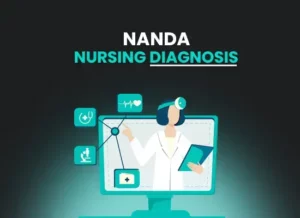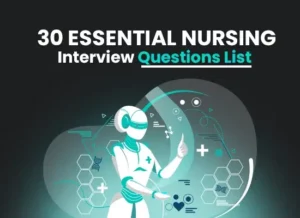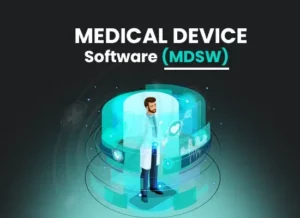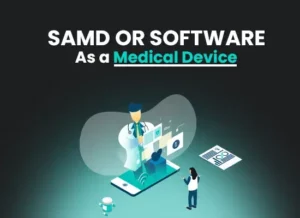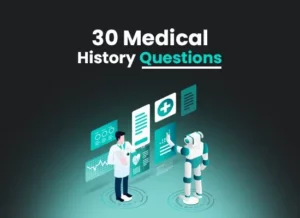Medical Device Software (MDSW) – A Complete Guide to Medical Software
- August 8, 2024
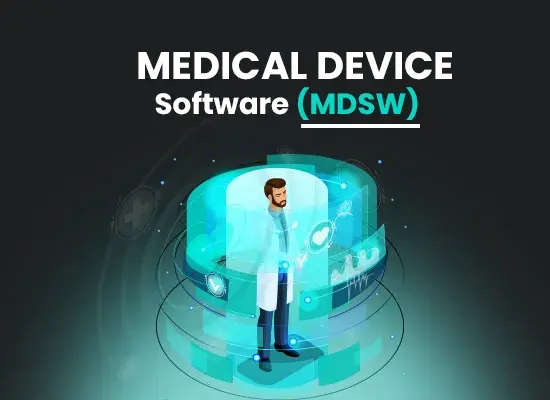
Table of Contents
Medical Device Software (MDSW) is the digital backbone propelling modern healthcare forward. From life-saving implants to diagnostic imaging, MDSW plays a critical role in improving patient outcomes and revolutionizing medical practices. This comprehensive guide delves into the intricacies of MDSW, exploring its development, regulations, challenges, and the transformative impact it has on the healthcare industry.
What is Medical Device Software (MDSW)?
Medical device software (MDSW) is a specialized category of software designed to function as a medical device or to support the functioning of a medical device. This type of software is essential in the healthcare sector, ensuring that medical devices operate safely and effectively, contributing to patient care and treatment outcomes.
MDSW can be standalone software or integrated into a hardware medical device, providing functionalities such as diagnostics, treatment recommendations, monitoring, and data analysis. Examples include software for imaging systems, patient monitoring systems, and software that controls or calibrates medical equipment. The primary objective of medical device software is to ensure that the device meets stringent safety and performance standards, mitigating risks associated with its use.
Regulation and compliance are critical aspects of medical device software. Authorities such as the FDA in the United States and the European Medicines Agency in Europe have established rigorous standards and guidelines to govern the development, testing, and deployment of MDSW. These regulations ensure that the software undergoes thorough validation and verification processes, guaranteeing its reliability and safety for clinical use.
Moreover, medical device software often incorporates advanced technologies like artificial intelligence and machine learning to enhance its capabilities. These technologies can improve diagnostic accuracy, personalize treatment plans, and provide predictive analytics, thereby enhancing overall patient outcomes. However, integrating these advanced technologies also requires careful consideration of regulatory requirements to ensure they meet the necessary safety and efficacy standards.
In conclusion, medical device software plays a vital role in modern healthcare, offering innovative solutions for patient care and medical research. Its development and deployment are governed by strict regulatory frameworks to ensure it delivers accurate, reliable, and safe functionalities. As technology evolves, MDSW continues to advance, bringing new opportunities and challenges to the healthcare industry.
Try it - Love it - Buy it
Avail Our Free Trial Now!

What are the Benefits of Medical Device Software (MDSW)?
Medical Device Software (MDSW) is revolutionizing the healthcare industry by providing a range of benefits that enhance patient care, improve diagnostics, and streamline medical workflows. This medical device software leverages the ubiquity and advanced capabilities of mobile devices to offer solutions that are both accessible and effective.
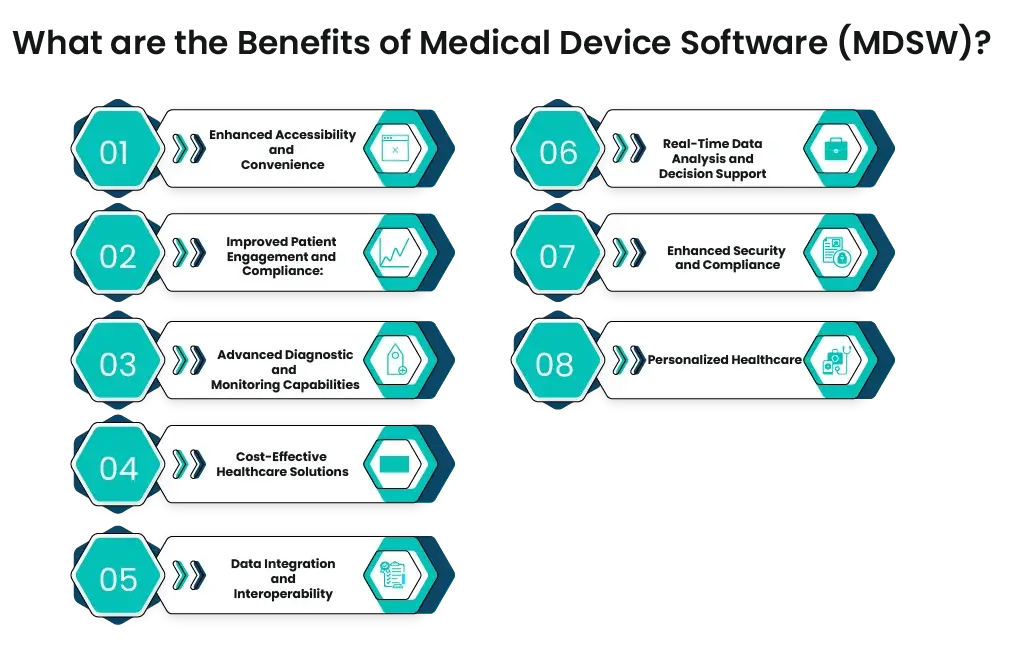
1. Enhanced Accessibility and Convenience:
Medical device software on mobile platforms allows healthcare providers and patients to access essential medical information and applications anytime and anywhere. This convenience ensures timely interventions and continuous monitoring, especially for chronic disease management.
2. Improved Patient Engagement and Compliance:
By integrating medical device software into mobile devices, patients are more likely to engage with their treatment plans. Features such as reminders, educational content, and easy communication with healthcare providers increase adherence to prescribed therapies.
3. Advanced Diagnostic and Monitoring Capabilities:
Medical device software transforms mobile devices into powerful diagnostic and monitoring tools. Applications can track vital signs, analyze data, and alert healthcare providers to potential health issues, leading to earlier detection and intervention.
4. Cost-Effective Healthcare Solutions:
Implementing medical device software reduces the need for frequent in-person visits, cutting down on healthcare costs for both providers and patients. Remote monitoring and telemedicine capabilities allow for efficient management of health conditions.
5. Data Integration and Interoperability:
Medical device software facilitates the integration of patient data from various sources, creating comprehensive health records. This interoperability enhances the accuracy of diagnoses and the effectiveness of treatments by providing a holistic view of patient health.
6. Real-Time Data Analysis and Decision Support:
With medical device software, real-time data analysis becomes possible, enabling prompt decision-making. Healthcare providers can access up-to-date patient information, allowing for more accurate and timely clinical decisions.
7- Enhanced Security and Compliance:
Modern medical device software adheres to strict regulatory standards, ensuring that patient data is secure and privacy is maintained. Compliance with healthcare regulations such as HIPAA protects sensitive information from breaches.
8- Personalized Healthcare:
Medical device software can tailor healthcare solutions to individual patient needs. By analyzing personal health data, these applications offer personalized recommendations and treatment plans, improving patient outcomes.
Medical device software on mobile platforms is a game-changer in the healthcare industry, offering numerous benefits that enhance patient care, improve healthcare efficiency, and reduce costs. Its ability to provide real-time data, enhance patient engagement, and ensure data security makes it an invaluable tool in modern medicine. Embracing medical device software is essential for advancing healthcare delivery and improving patient outcomes.
How Can Businesses Benefit from Medical Device Software (MDSW)?
Businesses, particularly in the healthcare sector, can significantly benefit from the implementation of medical device software (MDSW). This advanced software facilitates enhanced patient care, streamlines operations, and drives innovation. Here are key ways businesses can leverage MDSW:
Medical device software enables precise diagnostics and monitoring, leading to improved patient outcomes. Devices equipped with advanced software can collect and analyze data in real-time, providing healthcare professionals with critical insights. This facilitates early detection of medical conditions, personalized treatment plans, and continuous monitoring of patient health, thereby enhancing the quality of care.
Implementing software for mobile devices can streamline healthcare operations, reducing manual workloads and minimizing errors. Automated data collection and analysis reduce the time healthcare professionals spend on administrative tasks, allowing them to focus more on patient care. Additionally, the integration of MDSW with electronic health records (EHR) ensures seamless data transfer, reducing redundancy and operational costs.
Businesses must adhere to stringent regulations to ensure patient safety and data security. Medical device software is designed to comply with regulatory standards such as the Medical Device Regulation (MDR) in the EU. By utilizing MDSW, businesses can ensure their devices meet these regulations, thus avoiding legal complications and fostering trust among users. Furthermore, advanced security features in MDSW protect sensitive patient data from breaches and cyber threats.
Investing in software for mobile devices drives innovation, enabling businesses to develop cutting-edge solutions that meet evolving healthcare needs. MDSW allows for the integration of artificial intelligence (AI) and machine learning (ML) algorithms, which can predict patient conditions, suggest treatments, and enhance diagnostic accuracy. Businesses that leverage these technologies can gain a competitive edge, attracting more clients and expanding their market share.
Medical device software enhances patient engagement by providing interactive and user-friendly interfaces. Patients can easily access their health data, track their progress, and communicate with healthcare providers through mobile applications linked to medical devices. This increased engagement leads to higher patient satisfaction, better adherence to treatment plans, and overall improved health outcomes.
In conclusion, medical device software offers numerous benefits to businesses in the healthcare sector, from improving patient care and operational efficiency to ensuring regulatory compliance and driving innovation. By integrating MDSW into their operations, businesses can not only enhance their service offerings but also achieve sustainable growth and competitive advantage.
Data Security Regulations for Medical Device Software (MDSW):
Medical device software (MDSW) is integral to the healthcare industry, ensuring the safety and efficacy of medical devices through precise and reliable software applications. With the increasing use of mobile devices in healthcare, stringent data security regulations have become essential to protect sensitive medical information and ensure patient safety. This article outlines nine critical data security regulations for Medical Device Software in medical applications.
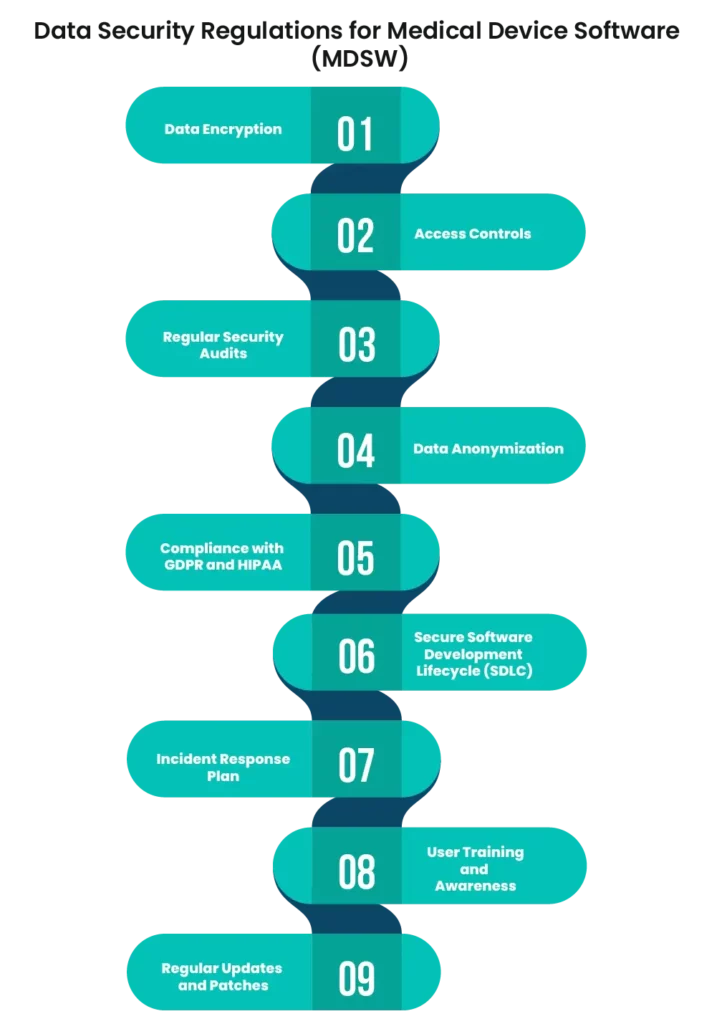
1. Data Encryption:
Medical Device Software must utilize robust encryption techniques to protect data both at rest and in transit. Encryption ensures that even if data is intercepted or accessed unauthorizedly, it remains unreadable and secure.
2. Access Controls:
Implementing strict access controls is vital for software for mobile devices. Only authorized personnel should have access to sensitive patient data, minimizing the risk of data breaches and unauthorized usage.
3. Regular Security Audits:
Conducting regular security audits helps identify vulnerabilities in the software for mobile devices. These audits ensure compliance with data security standards and help in implementing necessary updates and patches.
4. Data Anonymization:
Medical device software should employ data anonymization techniques to protect patient identities. Anonymizing data reduces the risk of exposing personal information during data analysis and sharing.
5. Compliance with GDPR and HIPAA:
Medical device software must comply with international data protection regulations such as GDPR (General Data Protection Regulation) and HIPAA (Health Insurance Portability and Accountability Act). These regulations provide a framework for ensuring data security and patient privacy.
6. Secure Software Development Lifecycle (SDLC):
Adopting a secure SDLC approach ensures that security is integrated into every phase of software for mobile devices development. This includes threat modeling, code reviews, and security testing throughout the development process.
7. Incident Response Plan:
Having a robust incident response plan is crucial for medical device software. This plan should outline the steps to be taken in case of a data breach, including immediate containment, investigation, and notification procedures.
8. User Training and Awareness:
Training healthcare professionals on the importance of data security and proper usage of medical device software is essential. Awareness programs help in minimizing human errors that could lead to security breaches.
9. Regular Updates and Patches:
Keeping medical device software up-to-date with the latest security patches and updates is critical. Regular updates address known vulnerabilities and enhance the overall security posture of the software.
In the rapidly evolving healthcare industry, ensuring the security of medical device software is paramount. Adhering to these nine data security regulations helps safeguard sensitive medical data, protects patient privacy, and maintains the integrity and reliability of medical devices. As mobile devices continue to play a significant role in healthcare, robust security measures will remain a cornerstone of medical device software development and deployment.
Decision-Making Aids for the qualification or classification of Medical Device Software (MDSW):
Medical device software (MDSW) plays a critical role in modern healthcare by supporting various clinical functions, ranging from diagnostic to therapeutic applications. Ensuring the quality and proper classification of MDSW is essential to safeguard patient safety and meet regulatory standards. Decision-making aids are crucial tools that help in the qualification and classification of medical device software, ensuring compliance with regulatory requirements and enhancing the reliability and safety of the software.
Decision-making aids for MDSW involve systematic methodologies and frameworks that assist developers, manufacturers, and regulatory bodies in determining the appropriate classification of software based on its intended use, risk level, and complexity. These aids typically include guidelines, checklists, and flowcharts that outline the criteria for categorizing software as a medical device. For instance, the European Union Medical Device Regulation (EU MDR) provides specific rules and guidance documents, such as MDCG 2023-4, to support the classification process of medical device software.
The classification of medical device software is critical because it dictates the regulatory pathway that the software must follow before it can be marketed and used clinically. Higher-risk software, which can significantly impact patient health if it fails, requires more stringent regulatory scrutiny compared to lower-risk software. Decision-making aids help streamline this process by providing clear criteria and procedures, ensuring that all aspects of the software’s functionality and potential risks are thoroughly evaluated.
Effective decision-making aids for the qualification of MDSW also consider the software’s life cycle, from initial development to post-market surveillance. These tools ensure that all phases of the software development life cycle are compliant with regulatory standards, promoting consistent quality and safety. By incorporating risk management principles and aligning with international standards, these aids facilitate the development of robust medical device software that meets global regulatory expectations.
In conclusion, decision-making aids are indispensable in the qualification and classification of medical device software. They provide a structured approach to identifying and mitigating risks associated with medical device software, ensuring compliance with regulatory frameworks, and ultimately enhancing patient safety and healthcare outcomes. As the complexity and prevalence of medical device software continue to grow, the importance of reliable decision-making aids in this field cannot be overstated.
What are the Framework Regulations for Medical Device Software (MDSW)?
The Framework Regulations for Medical Device Software (MDSW) are essential guidelines that ensure the safety, efficacy, and reliability of software used in medical devices. These regulations are designed to address the unique challenges posed by the integration of software in medical devices, considering the rapid advancements in technology and the critical role that software plays in modern healthcare. The regulations are established to maintain high standards in the design, development, and maintenance of medical device software, ensuring patient safety and regulatory compliance.
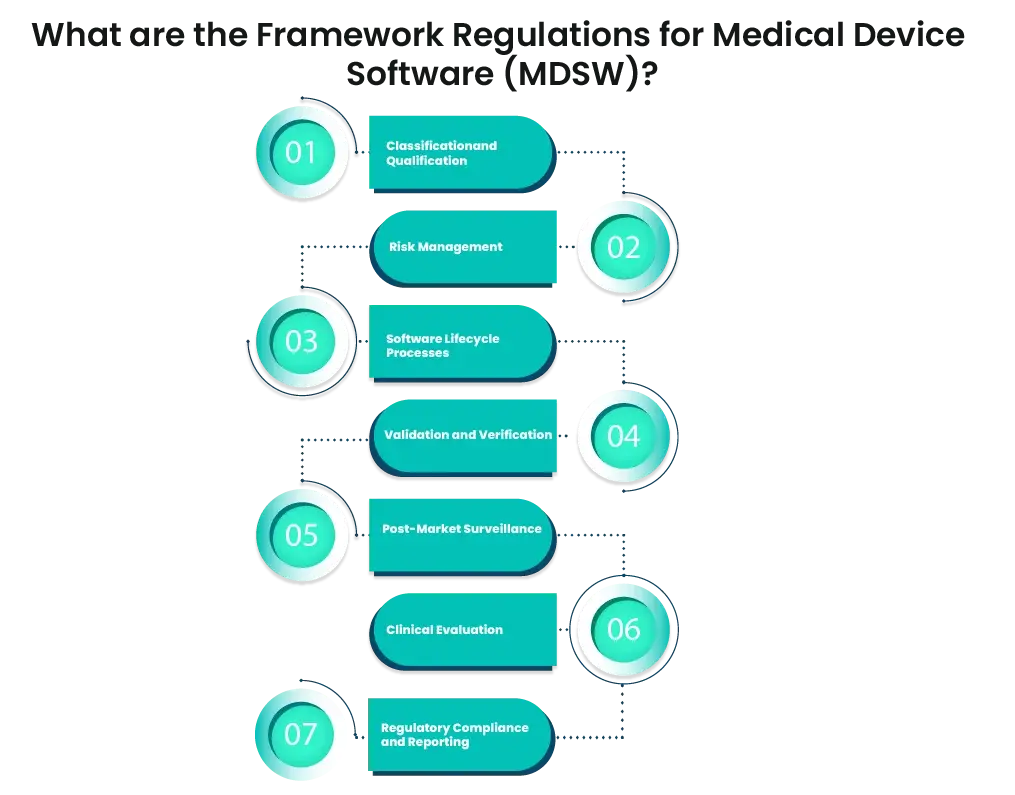
1. Classification and Qualification:
Medical device software must be accurately classified based on its intended use and risk profile. Proper classification ensures that the appropriate regulatory requirements are applied, ensuring the software’s safety and performance.
2. Risk Management:
A comprehensive risk management process must be implemented throughout the software’s lifecycle. This involves identifying potential risks, assessing their impact, and implementing measures to mitigate these risks. Effective risk management ensures that the software remains safe and effective for use in medical settings.
3. Software Lifecycle Processes:
The regulations mandate a structured approach to software development, including requirements for design, development, testing, and maintenance. Adhering to these processes ensures that the software is developed systematically and undergoes rigorous validation to meet quality standards.
4. Validation and Verification:
Medical device software must undergo thorough validation and verification to ensure it meets its intended purpose and performs reliably. This involves extensive testing and documentation to demonstrate compliance with regulatory standards and functional requirements.
5. Post-Market Surveillance:
Continuous monitoring of the software after it has been released to the market is crucial. Post-market surveillance activities include collecting and analyzing data on the software’s performance, identifying potential issues, and implementing corrective actions to maintain safety and effectiveness.
6. Clinical Evaluation:
A clinical evaluation of the medical device software is required to provide evidence of its clinical benefits and performance. This involves assessing the software in real-world settings and ensuring it meets the clinical needs and expectations of healthcare providers and patients.
7. Regulatory Compliance and Reporting:
Compliance with regulatory requirements is mandatory for medical device software. This includes adhering to standards set by regulatory bodies and submitting necessary documentation and reports. Regular audits and inspections may be conducted to ensure ongoing compliance.
By following these 7 Framework Regulations, developers and manufacturers of medical device software can ensure that their products are safe, effective, and compliant with regulatory standards. These regulations are vital in protecting patient safety and maintaining the integrity of medical devices in healthcare settings.
Examples of Medical Device Software (MDSW):
Medical device software (MDSW) plays a crucial role in modern healthcare, offering functionalities ranging from diagnostics to treatment management. Open-source medical device software provides accessible, transparent, and customizable options for healthcare providers and developers. Here are six notable examples:
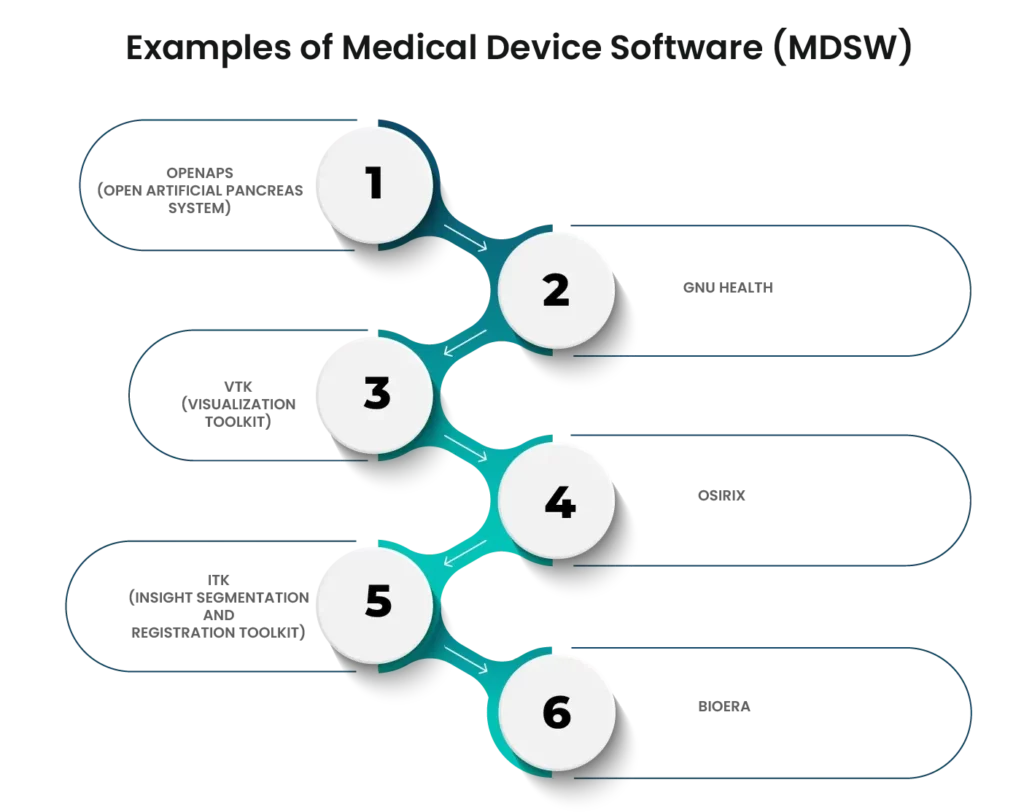
1- OpenAPS (Open Artificial Pancreas System):
Description:
OpenAPS is an open-source project designed to automate insulin delivery for people with diabetes. It leverages existing medical devices and software to create a closed-loop system for better blood glucose control.
Significance:
This software has empowered many patients to manage their diabetes more effectively, illustrating the potential of open-source solutions in personalized medicine.
2- GNU Health:
Description:
GNU Health is a free, open-source health and hospital information system. It includes electronic medical records (EMR), health information systems (HIS), and laboratory information management systems (LIMS).
Significance:
By providing comprehensive healthcare management tools, GNU Health supports medical professionals in delivering high-quality care, particularly in resource-limited settings.
3- VTK (Visualization Toolkit):
Description:
VTK is an open-source software system for 3D computer graphics, image processing, and visualization. It is widely used in medical imaging applications to visualize complex data.
Significance:
VTK’s powerful visualization capabilities are crucial for medical diagnostics and research, aiding in the interpretation of medical imaging data.
4- OsiriX:
Description:
OsiriX is an open-source DICOM viewer for MacOS, used for viewing medical images such as MRI, CT scans, and PET scans. It supports a wide range of formats and offers advanced image processing tools.
Significance:
OsiriX enhances the diagnostic process by providing detailed and high-quality image analysis tools, making it a valuable asset for radiologists and medical professionals.
5- ITK (Insight Segmentation and Registration Toolkit):
Description:
ITK is an open-source software toolkit for performing image segmentation and registration. It is commonly used in medical imaging research to develop new algorithms for image analysis.
Significance:
ITK’s robust framework facilitates the development of innovative medical imaging techniques, contributing to advancements in medical diagnostics and treatment planning.
6- BioEra:
Description:
BioEra is a visual designer for biofeedback and neuroscience applications. It allows users to create custom signal processing and feedback applications for medical research and clinical use.
Significance:
By enabling the creation of tailored biofeedback applications, BioEra supports both clinical practice and medical research, particularly in the fields of neuroscience and psychology.
Open-source medical device software not only fosters innovation and collaboration within the healthcare community but also ensures that high-quality medical solutions are accessible to a broader audience. These examples highlight the diverse applications and significant impact of open-source MDSW in improving patient care and advancing medical research.
Subscribe to our Newsletter!
Subscribe our Newsletter to stay updated

Medical Device Software (MDSW) Risk Based Categories:
Medical Device Software (MDSW) is a subset of software for medical devices specifically designed for use on mobile platforms, such as smartphones and tablets. MDSW is becoming increasingly important as mobile technology advances and becomes more integrated into healthcare. This software can include applications that assist in diagnosing, treating, or monitoring patients, thus classifying it as software for medical devices under regulatory frameworks.
Risk-based categories for MDSW are essential to ensure patient safety and device efficacy. These categories help in assessing the potential risk associated with the software and guide the development, testing, and regulatory approval processes. Software for medical devices is categorized based on its intended use, the potential harm it could cause if it fails, and the complexity of its functionality. High-risk MDSW typically includes applications that directly impact patient health, such as those used for critical diagnostics or therapeutic interventions. Lower-risk categories might include software for general wellness monitoring.
Regulatory bodies, such as the FDA in the United States and the European Medicines Agency (EMA) in Europe, provide guidelines for these risk-based categories. They mandate stringent testing and validation processes for high-risk software for medical devices to ensure it meets safety and performance standards. For instance, MDSW intended for diagnosing serious conditions or providing life-supporting interventions undergoes more rigorous scrutiny compared to software meant for tracking daily activity levels.
The development lifecycle of software for medical devices must adhere to these regulatory guidelines to ensure compliance and safety. This includes comprehensive risk management practices, thorough documentation, and ongoing post-market surveillance. By categorizing MDSW based on risk, developers and regulatory bodies can prioritize resources and efforts to ensure the highest levels of safety and efficacy in mobile health solutions. This risk-based approach helps mitigate potential hazards associated with software for medical devices, ultimately protecting patients and improving healthcare outcomes.
In conclusion, the classification of Medical Device Software into risk-based categories is a critical aspect of ensuring the safety and effectiveness of medical device software. These categories facilitate a structured approach to regulation, development, and monitoring, ensuring that high-risk applications receive the necessary attention to safeguard patient health while enabling innovation in mobile health technologies.

